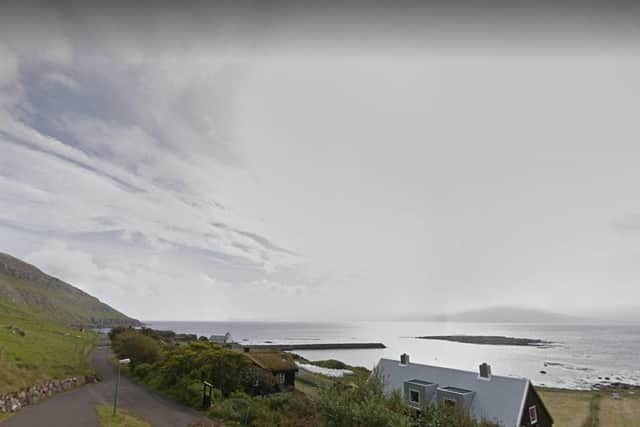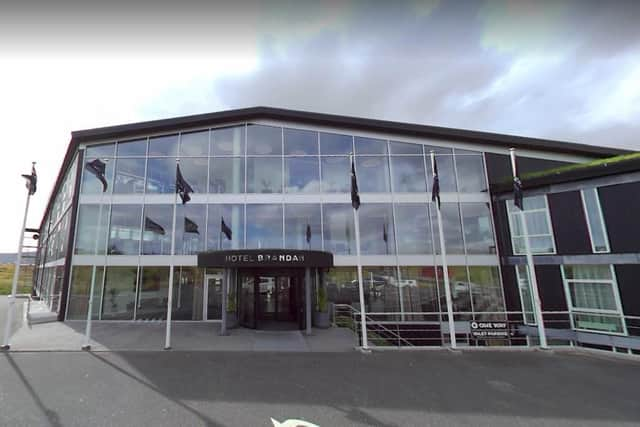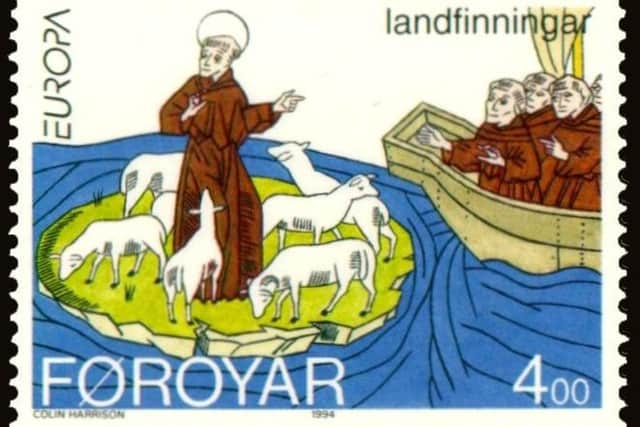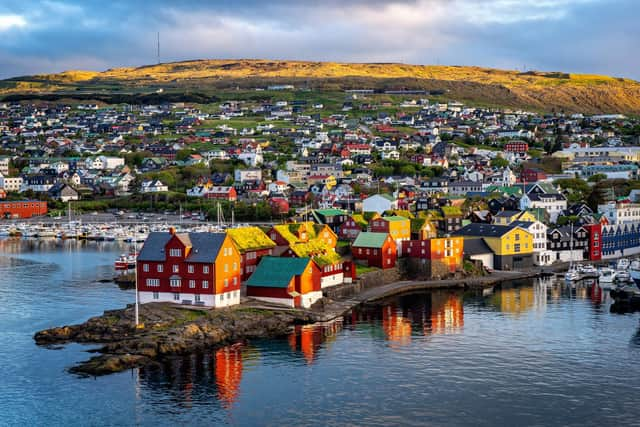Derry City FC heading to the Faroe Islands – an archipelago with ancient Irish links
and live on Freeview channel 276
Believe it or not, the ‘Red and White Army’ will be ploughing a well-worn furrow as Ireland’s links to the Faroes go way back and that’s not a reference to Brian Kerr’s stint in charge of the Faroese national team from 2009 to 2011.
In fact, it is believed Irish people may have settled the Faroes prior to the arrival of the Norse during the Viking expansion of the 9th Century.
Advertisement
Hide AdAdvertisement
Hide AdThere is even a hotel in the Faroese capital named after St. Brendan who is reputed to have visited the islands during his famous voyage in the Atlantic in the 6th Century.


The Irish connection is borne out in a number of ancient literary tracts as well as in the folk tradition of the Faroe Islanders themselves.
On the other hand the archaeological evidence of pre-Norse settlement on the islands is scant, and DNA evidence, while showing there were people on the islands before the Vikings, cannot conclusively point to whether or not those settlers were Irish but we are the likeliest candidates.
It has been suggested that Diciul, a 9th century Irish monk, identified the Faroes in his geography De mensura Orbis terra [On the measurement of the world].


Advertisement
Hide AdAdvertisement
Hide Ad"There is another set of small islands, nearly all separated by narrow stretches of water; in these for nearly a hundred years hermits sailing from our country, Ireland, have lived.
"But just as they were always deserted from the beginning of the world, so now because of the Northman pirates they are emptied of anchorites, and filled with countless sheep and very many diverse kinds of sea-birds. I have never found these islands mentioned in the authorities,” wrote Diciul.
A strong tradition associates ‘St. Brendan the Navigator’ with the islands.
Navigatio Sancti Brendani Abbatis [the Voyage of St. Brendan the Abbot] – recorded at some time between the mid-8th and early 10th century – suggests Brendan reached the islands one Easter in the early 500s.


Advertisement
Hide AdAdvertisement
Hide Ad“In making a circuit of the island, they saw great streams of water flowing from many fountains, full of all kinds of fish. St. Brendan said to the brethren: ‘Let us here perform the divine office, and sacrifice unto God the Lamb without spot, for this day is the festival of the Lord’s Supper;’ and they remained there until Easter Saturday.
"In the island they found many flocks of sheep, all pure white, so numerous as to hide the face of the land.”
Folk tradition in the Faroes points to Brendan having landed on the island of Streymoy at Kirkjubøur about 15-20 kilometres south of Tórshavn.


According to the Navigatio St. Brendan and his acolytes encountered a holy man already present on Streymoy who referred to the island immediately to the west as the ‘Paradise of Birds’. If the folk tradition is correct, this was a reference to either of the islands of Hestur, Koltur or Vágar.
Advertisement
Hide AdAdvertisement
Hide Ad“St. Brendan asked him also why the sheep were so very large on that island, larger even than oxen; and he told him that they were so much huger there than in the lands known to St. Brendan because they were never milked, and felt not the stress of winter, having at all seasons abundant pasture.
“They then went on board their vessel, and having given and received parting blessings, they proceeded on their voyage,” the narrative relates.
St. Brendan’s legacy can be felt today in place names like Brandansvík (Brendan’s bay) at the village of Kirkjubøur and in Hotel Brandan in Tórshavn which is named after the Kerry saint.
The hotel proudly declares the Irish heritage of the islands:
Advertisement
Hide AdAdvertisement
Hide Ad"On one of his crossings the southerly winds led St. Brendan to the Faroe Islands. The name Brandansvík, Bay of Brendan, may be an indication that he made landfall in Kirkjubøur. Several Faroese villages named their churches after him and there is a very old tradition of celebrating his feast day, May 16.
"St. Brendan and his followers met Christian hermits in the Faroe Islands and enjoyed their hospitality on ‘Sheep Island’ and in ‘Bird Paradise’. In 1976 Irish historian Tim Severin wanted to prove that St. Brendan as early as the 6th century had crossed the Atlantic in an open skin boat and reached America in the year 450, before Leif Eriksson the Lucky and 1000 years earlier than Christopher Columbus.
"Faroese visual artist Tróndur Patursson joined him on the crossing. The two were both convinced that St. Brendan stopped in the Faroe Islands on his way.
"And after braving the Atlantic for 50 days and 3,500 nautical miles, they made landfall in Newfoundland. Several branches of science have confirmed the ties connecting Ireland and the Faroe Islands.
Advertisement
Hide AdAdvertisement
Hide Ad"Historical sources tell us of Irish recluse monks settling in the Faroe Islands, their reliability is supported by Irish place names in difficult steep terrains in the Faroe Islands. Moreover, gene studies have demonstrated that around half of the Faroese population is of Irish or British origin.”
The references to Irish settlement of the island’s is not confined to the Irish literature. The Færeyinga saga – written in Iceland in the early 13th century – refers to the first settler of the island being a man with a Norse forename and an Irish surname.
“There was a man named Grim Camban. He first settled the Færeys in the days of Harold Fairhair. For before the king's overbearing many men fled in those days,” the saga states. Camban is believed to come from the old Irish ‘camb’ – crooked.
A stamp was jointly issued by Ireland and the Faroe Islands in 1994 commemorating St. Brendan making landfall in the 500s.
A traditional Irish name for the islands – ‘Na Scigirí’ is believed to come from ‘Eyja-Skeggjar’ – ‘Island-Beards’.